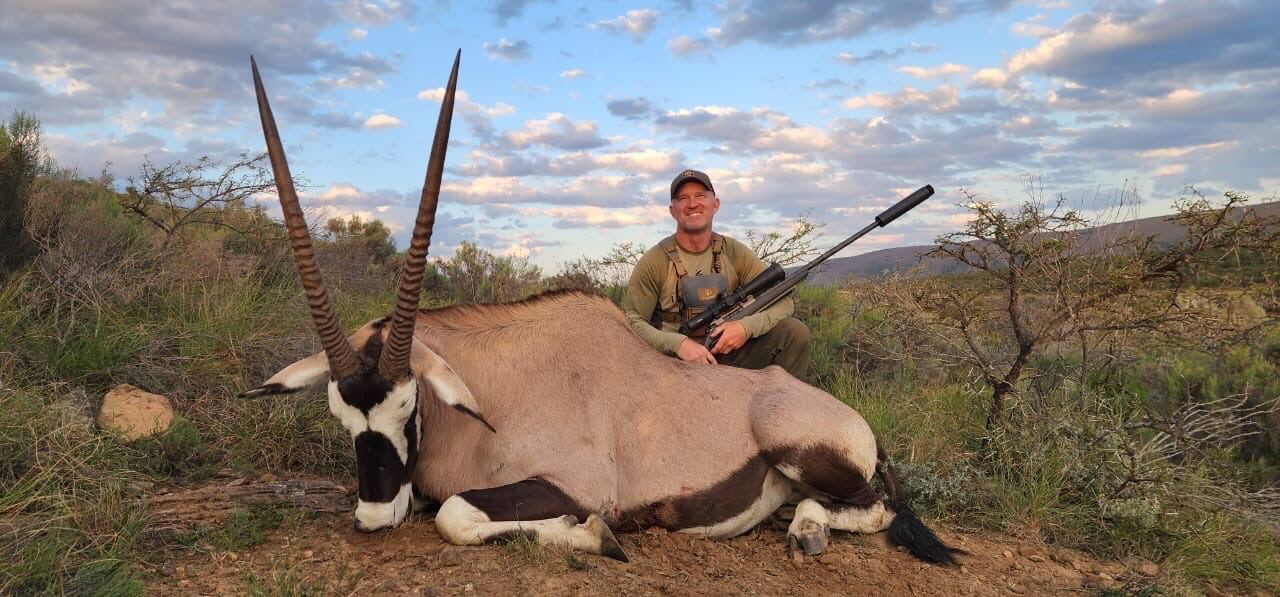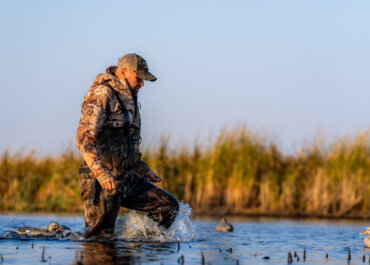Our alarms went off at 4 a.m. We had time for a quick cup of coffee before checking out of the hotel at 4:45. We headed to the underground parking garage, loaded our gear, and were ready to leave at 5 a.m. sharp. My goal for the day was to shoot a Knob-Billed Duck. We knew this would be a challenge. Our outfitter only knew of one nearby lake where they could be found. Other areas weren’t likely to hold Knob-Billed Ducks, so we hoped to take this species at the first lake. The pressure was on for a successful Knob-Bill hunt. We planned on heading for the Andes early the next morning and weren’t sure when I’d have another opportunity to hunt Knob-Billed Ducks.
Unfortunately, we ran into a problem before we could get on the road. The heavy metal gate that allowed vehicles out of the underground hotel garage was down and locked, and the parking garage attendant was nowhere to be found. After more than 40 minutes, we tracked down the attendant and his key. The gate was unlocked and we speedily drove toward the lake.
Our frustrating start to the day resulted in us arriving at the lake 30 minutes after first light. We were too late, and the ducks had already flown in from surrounding agricultural fields. We could see Knob-Bills everywhere, but none were within range. Most of them were floating in large groups in the center of the lake. There were a few near the shore along the west end. I tried everything to get a shot, including sneaking up to the west end, but couldn’t get close enough. The Knob-Bills were extremely wary and swam away as soon as they saw any movement. Our outfitter wasn’t optimistic, and said we probably wouldn’t see any action until that evening. He thought that just prior to nightfall the ducks would be flying off the lake to return to nearby fields.

We were hungry! Since we hadn’t eaten since the previous evening, we left the lake at 11 a.m. and drove to a nearby town for lunch. We found an establishment that specialized in serving seafood to the local residents. Angelo, Dad, Justin, Lee, the bird boys, and I crowded around a large table and the nine of us shared baskets of fried fish, fried shrimp, fried clams, and other items. Some foods were caliente (hot) and some were not. It was good to have a full stomach in case my quest for a Knob-Bill drug on into the evening.

We checked out a series of ponds and rivers where our outfitter had previously spotted Knob-Bills, but there were none to be found. We decided our next best option was to drive toward the coast and check out some coastal ponds before returning to the big lake for our late afternoon attempt at Knob-Bills.

We pulled off the paved highway and onto the rough roads heading to the ponds. The surrounding area was extremely dry and dusty. There were huts made of various materials including old metal, wood, and adobe. Many people in Peru live in informal squatter settlements. The land belongs to the government, but if an individual improves the land and stays long enough, eventually the government will give them the property and they own the place. It is a tough life because there aren’t any wells, so water has to be hauled in. The shacks’ metal, cardboard, or wood would eventually be replaced with homemade adobe blocks and finally, in 20 or 30 years, maybe cement or bricks. These people do what they can to survive. Many of Peru’s residents are employed in an informal economy that falls outside of government regulation and taxation. This also means they work without the protections of legal employment. It’s a barter-and-trade economy. We saw a local holding an antique shotgun in one hand, and that night’s dinner in the other hand: duck. It was nice that somebody in the area was able to shoot a duck that day.

These ponds were bigger than the ones we’d hunted the previous day, and because it was the middle of the day, there weren’t many ducks in the air. I finally decided to set up on a pond and Dad took a position about ¼ mile to the north. We each had a bird boy walk around the ponds to spook the ducks up. It worked and they put ducks in the air. Our resulting shots put more ducks up. It wasn’t fancy, but it worked. I ended up with about 20 Cinnamon Teal and a Bahama Pintail. Dad also had a few teal. It was a successful couple of hours.


We drove back to the lake for Knob-Bills and set up about an hour before dark. I put my waders on and worked my way up a thick, brushy finger where I had seen some Knob-Bills circle that morning. I had a single Knob-Bill come in and took a long shot. I hit him hard twice and could only watch as he kept on going. They are tough ducks!
Dad had set up in some brush just off the east side of the lake. Just prior to dark, he dropped a hen Knob-Billed Duck after hitting it twice. His younger bird boy stripped to his shorts for the retrieve. The beaks of Knob-Billed Ducks contain membranes shaped like combs called lamellate beaks. These unique beaks allow the ducks to sift small animals and other food sources from the water. Ducks with lamellate beaks take mouthfuls of water and let the water slip slowly from their beaks when sifting for food. What a cool looking duck! Unfortunately, I’d have to try for my Knob-Billed Duck another day.









